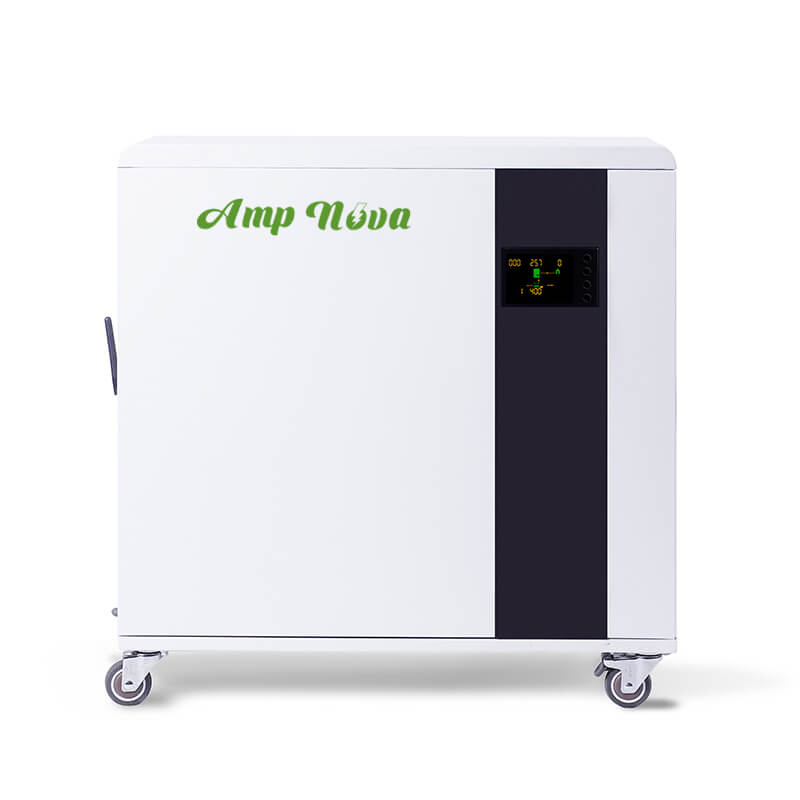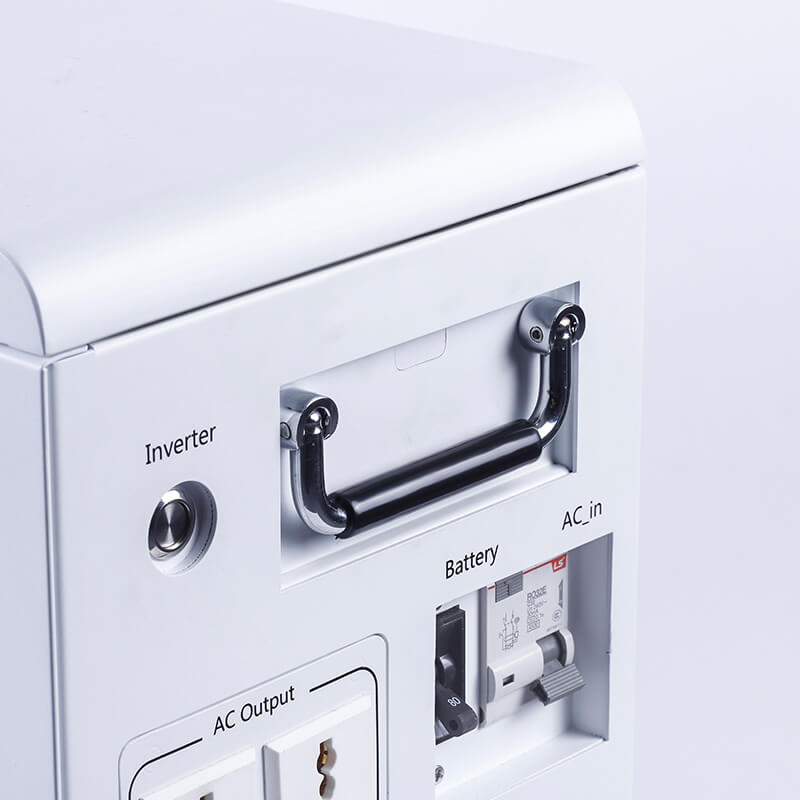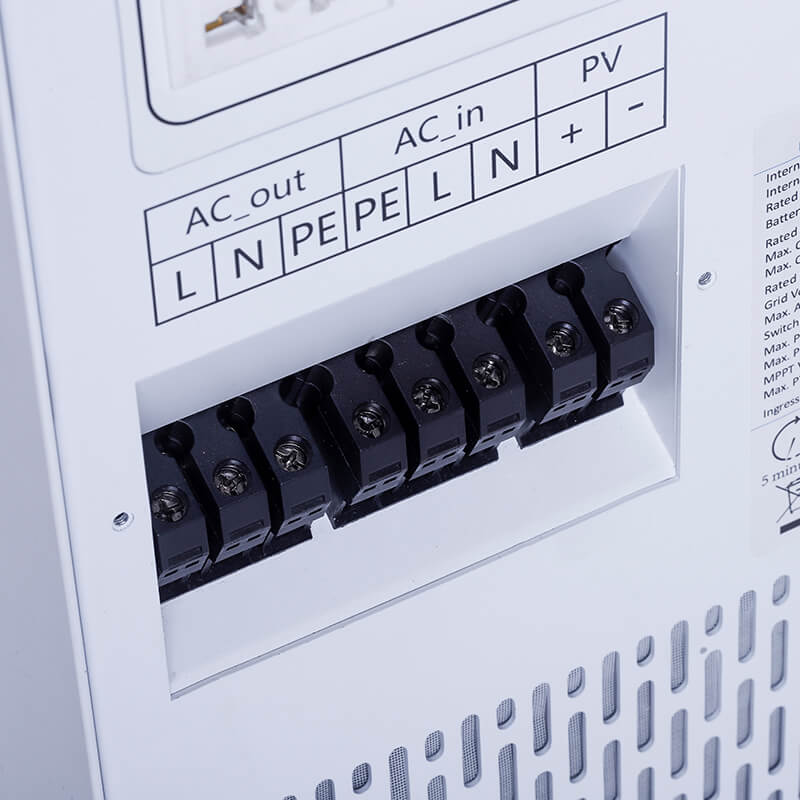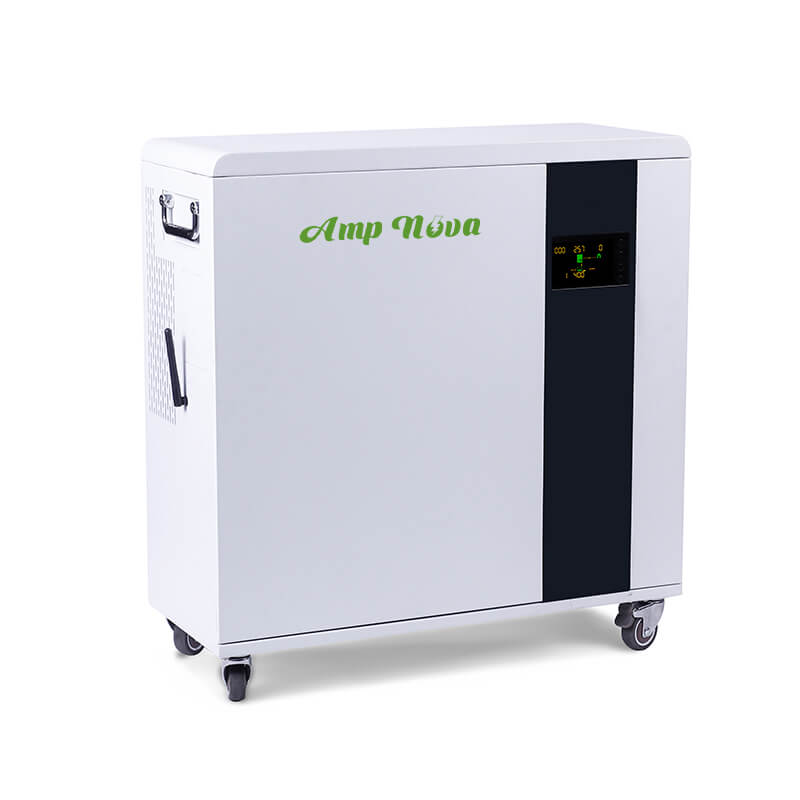- Introduction to Smart Solar Energy Systems
- The Basics of Solar Energy Conversion
- Components of a Smart Solar Energy System
- The Role of Solar Panels in Harnessing Sunlight
- Inverters and Energy Storage: Maximizing Solar Utilization
- Cost Analysis and Incentives for Solar Energy Adoption
- Solar Energy Systems for Industrial vs Commercial Use
- Choosing the Right Provider
- Conclusion: Empowering the Future with Smart Solar Energy
Contents
- 1 Introduction to Smart Solar Energy Systems
- 2 The Basics of Solar Energy Conversion
- 3 Components of a Smart Solar Energy System
- 4 The Role of Solar Panels in Harnessing Sunlight
- 5 Inverters and Energy Storage: Maximizing Solar Utilization
- 6 Cost Analysis and Incentives for Solar Energy Adoption
- 7 Smart Solar Energy Systems for Industrial vs Commercial Use
- 8 Choosing the Right Provider
- 9 Conclusion: Empowering the Future with Smart Solar Energy Systems
Introduction to Smart Solar Energy Systems
Smart solar energy systems stand at the forefront of innovation, driving a seismic shift in how we generate, store, and consume electricity. A traditional solar setup harnesses the sun’s energy using photovoltaic (PV) panels, converting sunlight into electricity that powers our homes and businesses. However, the addition of ‘smart’ technology takes this a step further, integrating cutting-edge software, automation, and internet-of-things (IoT) connectivity into the mix.

Smart solar energy systems boast several key features:
- Monitoring and Control: These systems are equipped with real-time monitoring capabilities, allowing users to track energy production, usage, and system performance through user-friendly interfaces. This visibility empowers consumers to manage their energy consumption more effectively.
- Energy Storage Integration: By combining solar panels with smart batteries, these systems can store excess energy for later use. This enables households to utilize solar power even during off-peak sunlight hours, enhancing self-sufficiency and reducing reliance on the grid.
- Automated Responses: Automation algorithms are capable of adapting to usage patterns, weather forecasts, and electricity rates to optimize energy usage and savings. For example, smart solar energy systems can automatically adjust energy storage or redirect excess power where it’s needed most.
- Interconnectivity and Grid Support: Integration with the larger energy grid allows for advanced functionality, such as selling surplus energy back to the grid or participating in demand response programs that help stabilize the grid during high-demand periods.
Smart solar energy systems are not just a leap forward for eco-friendly energy – they embody a proactive approach to managing renewable resources, encouraging sustainable practices, and forging a path towards a greener future. As these systems proliferate, they have the potential to transform energy consumption from a passive, one-way transaction to an interactive, efficient, and balanced ecosystem.
The Basics of Solar Energy Conversion
Solar energy conversion is an essential process that allows the harnessing of the sun’s abundant power. Through photovoltaic (PV) technology, solar panels convert sunlight directly into electricity. This process begins when photons from the sun strike the solar panel, exciting electrons in the panel’s semiconductor material, typically silicon.
- Absorption of Sunlight: Solar panels consist of multiple cells made up of layers of silicon and other materials. When sunlight hits these cells, it is absorbed by the semiconductor.
- Generation of Electron-Hole Pairs: The energy from the absorbed light generates electron-hole pairs by knocking electrons loose from their atoms, leaving behind holes.
- Separation of Charge Carriers: Solar cells are designed with electric fields that act to separate the negatively charged electrons from the positively charged holes.
- Creation of Electrical Current: Once separated, these charge carriers move to the respective n-type and p-type layers of the solar cell, generating an electrical current.
- Collection of Electricity: The current flows to the edge of the solar cell, reaching metal contacts. From here, electricity can be drawn for external use.
- Power Flow to the Grid or Battery Storage: The generated electricity either flows into the grid or is stored in batteries for later use. Power inverters play a critical role in converting the direct current (DC) produced by solar panels into the alternating current (AC) required by most household appliances and the electrical grid.
A smart solar energy systems efficiency hinges on the quality of the photovoltaic cells and the balance of system components. Temperature, the angle of sunlight, and the cleanliness of the panels are among the variables that can influence efficiency. Collectively, these components and factors enable the effective conversion of solar radiation into clean, renewable electricity, which smart solar energy systems manage and optimize for maximal benefit.
Components of a Smart Solar Energy System
A smart solar energy system integrates various components that work together to efficiently harness, store, and manage solar power. Understanding these components is essential for appreciating how smart solar energy systems are revolutionizing energy consumption.
- Solar Panels: These are the primary components of a smart solar energy system. They capture energy from the sun and convert it into electrical power. Today’s solar panels are more efficient than ever, and advanced photovoltaic technology is used to maximize energy conversion rates.
- Solar Inverters: Inverters take the direct current (DC) electricity produced by solar panels and convert it into alternating current (AC), which is the type of electricity utilized in homes and businesses. Smart inverters go a step further by optimizing this conversion process and providing system monitoring capabilities.
- Energy Storage Systems: Batteries or other storage systems enable a smart solar energy systems setup to store excess power generated during peak sunshine hours for use during lower production periods, like nights or cloudy days. These storage systems increasingly use lithium-ion technology for high energy density and longevity.
- Smart Meters and Monitoring Systems: Monitoring allows for adaptive energy distribution, predictive maintenance, and more informed consumer usage patterns.
- Energy Management Systems (EMS): An EMS is a digital platform that uses the data from smart meters and other sensors to optimize energy use. It can control when to store energy, when to use it, or even when to sell excess power back to the grid.
- Internet of Things (IoT) Devices: Smart solar energy systems often include IoT devices that allow for remote management and control. Users can adjust settings, troubleshoot issues, and optimize their system’s performance from a smartphone or computer.
This combination of advanced technology and interconnected components exemplifies how smart solar energy systems ensure maximum efficiency and sustainability for the green-conscious consumer.

The Role of Solar Panels in Harnessing Sunlight
Solar panels are the cornerstone technology in tapping the inexhaustible supply of energy from our nearest star, the Sun. Primarily made of silicon, these panels contain photovoltaic cells that convert sunlight into direct current (DC) electricity. The process, known as the photovoltaic effect, is both silent and produces no direct emissions, positioning solar panels as an essential component of sustainable energy solutions.
The functionality of solar panels hinges on the quality and efficiency of the photovoltaic cells. These cells are typically coupled in series to form a solar module, with multiple modules connected to create a solar panel array. The greater the surface area, the more sunlight can be captured, leading to increased energy production.
Key elements in the efficacy of solar panels include:
- Orientation and tilt: Aligning solar panels to maximize exposure to the sun’s path increases efficiency.
- Surface cleanliness: Dirt and debris on panels can block sunlight, so regular cleaning is imperative.
- Quality of materials: High-grade silicon leads to more efficient sunlight-to-energy conversion.
- Weather conditions: While solar panels can still operate on cloudy days, optimal energy production occurs under direct sunlight.
Once sunlight is transformed into DC electricity, a solar inverter converts it into alternating current (AC), usable by home appliances and the grid. Advanced smart solar energy systems often incorporate smart technology, enabling not just the passive harnessing of sunlight but also active management and optimization of energy production and consumption. This addition turns solar panel systems into intelligent networks capable of responding to variable energy demands, weather forecasts, and real-time pricing information, revolutionizing our approach to energy consumption.
Inverters and Energy Storage: Maximizing Solar Utilization
Smart solar energy systems are revolutionizing energy consumption by enhancing the efficiency of solar power storage and deployment. Central to this are inverters and smart solar energy systems solutions that ensure solar energy is not simply a fleeting resource available only when the sun shines but a constant, reliable power source.
Inverters are pivotal in the realm of solar-generated electricity. These devices convert the direct current (DC) produced by solar panels into the alternating current (AC) used in homes and businesses. Modern smart inverters go a step further, managing power flow to optimize efficiency, provide grid support, and facilitate real-time monitoring and control.
Energy storage systems, commonly encompassing battery banks, enable excess energy production to be stored rather than wasted. When solar panels produce more power than needed, instead of sending it back to the grid, it’s tucked away in these batteries. During times of low production or peak demand, when buying electricity from the grid is more expensive, stored energy can be released, effectively reducing reliance on the grid and lowering electricity costs.
Together, inverters and smart solar energy systems contribute to a smart solar setup by:
- Increasing Self-Consumption: Homeowners can maximize the use of their solar energy, leading to greater energy independence.
- Enhancing Energy Resilience: Energy storage provides a backup during power outages, ensuring energy security.
- Flattening Peak Demand: By utilizing stored energy during peak hours, demand on the grid is reduced, which can lower energy costs and decrease the need for fossil-fuel-based peaking power plants.
- Providing Grid Services: Advanced inverters can help stabilize the grid by regulating voltage and frequency, and by providing reactive power.
Integrating smart technology into solar systems is not just about generating clean energy; it’s about making that energy as accessible and effective as possible, day or night, clear or cloudy. As solar technology and smart grid infrastructure progress, inverters and energy storage systems will continue to be instrumental in maximizing solar utilization.
Cost Analysis and Incentives for Solar Energy Adoption
When considering the leap into smart solar energy systems adoption, homeowners and businesses must perform a detailed cost analysis to ensure the long-term financial viability of their investment. The initial cost of a smart solar energy system installation can be substantial. This includes the price of solar panels, inverters, batteries, and other necessary components, as well as labor costs for installation.
However, the operational costs associated with solar energy are considerably lower than those associated with traditional energy sources. Once installed, solar panels require minimal maintenance and provide electricity that can significantly reduce monthly utility bills. Over time, this can lead to substantial savings, offsetting the upfront installation costs.
To further encourage the transition to renewable energy sources, various governments and institutions offer financial incentives. These can include:
- Tax Credits: Substantial federal tax credits can reduce the cost of solar panel installations by a percentage of the total cost.
- Net Metering: Many regions allow solar system owners to sell excess energy back to the grid, resulting in credits on utility bills.
- Rebates: State and local governments, as well as some utility companies, may provide rebates to reduce the upfront cost of a solar system.
Understanding the price fluctuations of traditional energy sources is crucial. As fossil fuel prices continue to be unpredictable, solar energy offers a more consistent and stable investment over time.
Lastly, businesses adopting solar energy can benefit from improvements in Corporate Social Responsibility (CSR). Demonstrating a commitment to sustainability can enhance brand image and customer loyalty, potentially leading to increased sales and market share.
When analyzing costs and incentives, the convergence of long-term savings, government incentives, and improved brand reputation make smart solar energy systems an increasingly attractive option for those seeking to reduce their carbon footprint and embrace a more sustainable future.

Smart Solar Energy Systems for Industrial vs Commercial Use
While the core goal of reducing energy costs and carbon footprints is shared by both industrial and commercial sectors, the application, scale, and design of smart solar energy systems in these two segments vary significantly.
For industrial use, smart solar energy systems are usually implemented on a grander scale. An industrial solar project must cater to the high-power demand, often requiring a combination of rooftop installations, ground-mounted solar farms, and sometimes, even solar carport structures.
- Capacity and Coverage: Industrial facilities typically require systems that can generate tens of megawatts of power to accommodate heavy machinery and continuous processes.
- Durability and Performance: Due to harsher environmental conditions, industrial solar panels are engineered for durability and to maintain performance over time despite exposure to chemicals, dust, or intense heat.
- Integration with Operations: Smart solar systems for industrial applications are often integrated with energy management systems to optimize production processes and power usage.
Commercial smart solar energy systems, on the other hand, generally have a smaller scope of application.
- Multi-functionality: Commercial installations often combine energy production with aesthetic or practical building enhancements, such as solar parking lots that provide shade or building-integrated photovoltaics (BIPV) that contribute to the structure’s design.
- Customer Engagement: Companies may use their solar installations as part of their marketing strategy to demonstrate a commitment to sustainability, appealing to environmentally conscious consumers.
- Financial Solutions: Whereas industrial setups might require significant capital expenditure for larger systems, commercial solar projects often avail of leasing or Power Purchase Agreements (PPAs) due to more varied fiscal constraints.
The integration of smart solar energy systems in the industrial and commercial sectors signifies a shift towards more sustainable practices, with each tailor-fitted to the unique requirements and opportunities of their respective environments.
Choosing the Right Provider
Selecting the appropriate provider for a smart solar energy systems installation is a critical decision that can significantly influence energy consumption and cost savings. Homeowners and businesses alike must conduct thorough research to ensure their provider is trustworthy and competent. Here are several key factors to consider:
- Expertise and Experience: Seek companies with a proven track record in installing smart solar systems. Longevity in the industry often indicates that they have accumulated significant knowledge and can handle a wide array of situations.
- Certifications and Licensing: Verify that the provider has all the necessary certifications and licenses. This is a testament to their professionalism and adherence to industry standards.
- Equipment Quality: Investigate the quality of solar panels and smart energy system components. Reputable providers use durable, efficient, and technologically advanced products from well-known manufacturers.
- Customization Options: Each property is unique, so the provider must offer customized solutions tailored to specific needs, roof types, and consumption patterns.
- Financial Options: Evaluate the financing, leasing, and purchasing options available. A reliable provider should offer transparent pricing and flexible payment plans compatible with various budgets.
- Customer Service: Review customer testimonials and feedback. Good customer service is characterized by responsiveness, clear communication, and ongoing support after installation.
- Warranty and Maintenance: Ensure that the provider offers substantial warranties and maintenance services. An ideal solar energy partner stands behind their installations and assists with future upgrades or repairs.
- Rebates and Incentives: Knowledgeable providers can help navigate government or utility incentives to reduce the overall cost of the smart solar energy system.
By taking these factors into account, individuals and businesses can partner with a provider that will facilitate a seamless transition to smart solar energy, enabling them to optimize their energy usage and achieve long-term savings.
Conclusion: Empowering the Future with Smart Solar Energy Systems
As we stand at the cusp of a renewable energy revolution, smart solar energy systems are at the forefront, shaping a sustainable future. These systems offer an integrated approach to energy management, combining the benefits of solar power with advanced technology to maximize efficiency and ease of use. They symbolize a paradigm shift from traditional energy consumption patterns to smarter, more adaptable methods.
Smart solar energy systems make renewable energy more accessible while also providing substantial environmental and economic benefits. With advanced analytics and real-time data monitoring, these systems empower homeowners and businesses to make informed decisions about energy use, leading to cost savings and a reduced carbon footprint.
Moreover, the integration of smart grid technologies facilitates a more resilient energy infrastructure, enabling a more seamless incorporation of renewable energy sources. This not only helps to stabilize the energy supply but also contributes to the overall health of the planet by mitigating the adverse effects of fossil fuel dependence.
The push towards smart solar energy systems represents a commitment to innovation and sustainability. As research and development continue, we can anticipate even more sophisticated solutions that will further enhance solar energy’s viability and attractiveness. These advancements are not just transformative for the energy sector; they embody a vision for a cleaner, more empowered future.
By embracing smart solar energy, we are paving the way for a world where renewable energy is not just an alternative but the cornerstone of our energy consumption. It is an exciting time to witness and participate in this evolution as we harness the power of the sun to illuminate the path toward a brighter, more sustainable tomorrow. Get in touch today with Solar Battery Manufacturer to take part in the revolution!
